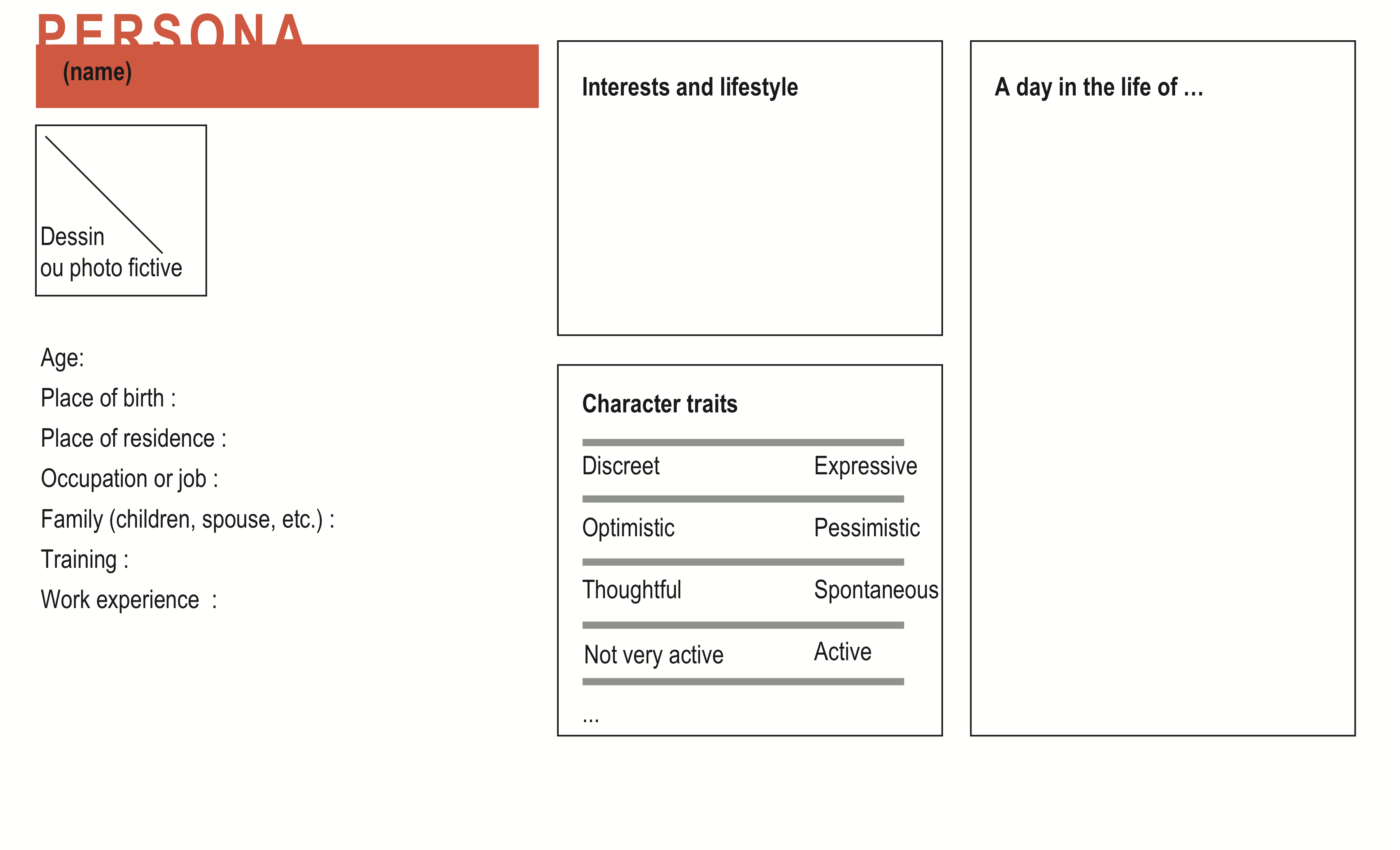Initiating the design
There are several questions that need to be answered to determine the positioning of the device. These questions will be used to establish the design criteria. The following chart of guidelines is proposed as a working tool. It will allow the necessary information to be gathered as reference throughout the creative process.

Defining the intention and objectives of the transmission and/or dissemination device
The initial intention can be broad. It refers to the impact the project will hopefully achieve. It stems from a need, a request, an observation or an aspiration, and is briefly stated through actions to be undertaken.

Who is the device intended for?
Why is identifying the public important?
It is important to know who the public will be to ensure that the means and media used will appeal to them, as well as information and language that is intelligible and appropriate to their needs and ability to understand.
The project may also be intended for various publics. It is therefore important to know the nature of their diversity making it easier to propose a variety of similar or complementary means.

What will be the context setting?
Here, the question is to define when and where the device can take shape. Here are some questions to enlighten reflection:

What is the key message or messages to be conveyed?
The message(s) refers to what the public should remember as a result of experiencing the device. There may be one or more messages, varying in quantity according to the scope of the project. For example, if the device is a one-minute radio vignette, one message will be sufficient, whereas if the device is an exhibition, there may be a greater number of messages.

What should be the public’s experience?
How should transmission and/or dissemination be experienced? How the public interacts with the transmitted content is very important because it determines how an individual may or may not develop an interest in the subject. It also influences the memory of the latter. If the experience is good and memorable, it is much more likely to have a lasting impression.

Which means and/or media best correspond to the transmission project?
In light of the previously completed information and the profile of the identified public(s), it is now time to determine what medium would be best to ensure the project’s effectiveness and that its objectives are achieved. As there may be several possibilities, this step requires reflection. To assist with individual or collective reflection, it may be useful to refer to the mind map exercise.
Synopsis of a cultural transmission and/or diffusion device
This work process allowed the project in the making to be clearly defined. Depending on the scale of the project, the following phases often require conveying and explaining the project, when seeking funding, introducing the project team or bringing together collaborators. With the information from the chart of guidelines, it is now possible to write a summary that will enable its proper communication. This summary is called a synopsis. The synopsis is usually short, about ten sentences may suffice. Here is the framework for writing an effective synopsis:













